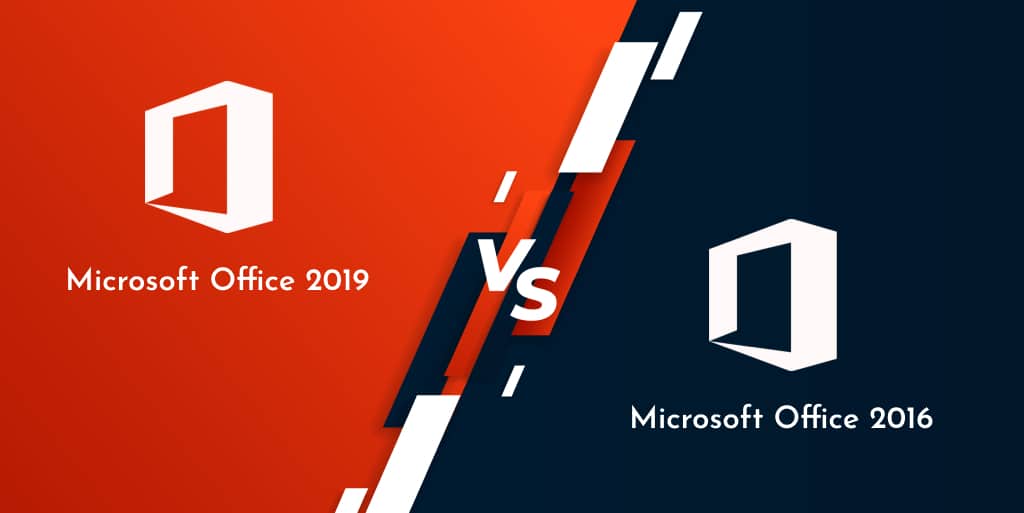Microsoft Office is a popular suite of productivity applications used by individuals and businesses worldwide. It offers a range of software tools that assist in creating, editing, and managing documents, spreadsheets, presentations, and more. Two of the most widely used versions of Microsoft Office are 2019 and 2016. In this article, we will explore the differences between these two versions and discuss their unique features, improvements, and considerations for users.
1. Introduction
Microsoft Office 2019 and 2016 are both comprehensive suites of office productivity applications developed by Microsoft Corporation. These applications are designed to streamline various tasks such as word processing, spreadsheet management, creating presentations, and more. While they serve similar purposes, there are notable differences between the two versions in terms of features, user interface, and performance.
2. User Interface and Design
One of the primary differences between Microsoft Office 2019 and 2016 lies in their user interfaces. Microsoft Office 2019 features a sleek and modern design, following the Fluent Design System introduced by Microsoft. It incorporates simplified ribbon menus, improved icons, and a visually appealing experience. On the other hand, Microsoft Office 2016 retains the more traditional user interface with the familiar ribbon menus and icons.
3. New Features and Enhancements
Microsoft Office 2019 introduces several new features and enhancements compared to its predecessor. These include advanced data analysis in Excel, new functions in Word and PowerPoint, improved inking in all applications, and enhanced security features. Microsoft Office 2016 also offers a range of useful features, but it lacks some of the latest additions found in the 2019 version.
4. Collaboration and Sharing
Collaboration and sharing capabilities have become increasingly important in modern office environments. Microsoft Office 2019 and 2016 provide various tools and features to facilitate collaboration among users. Both versions allow real-time co-authoring, where multiple users can simultaneously edit a document. However, Office 2019 offers more advanced collaboration features, such as @mentions and in-app sharing options, making it easier to work together on projects.
5. System Requirements
Another factor to consider when choosing between Microsoft Office 2019 and 2016 is the system requirements. Office 2019 has higher minimum hardware specifications compared to Office 2016. It requires a more powerful computer and may not be compatible with older operating systems. Office 2016, on the other hand, has more lenient system requirements, making it accessible to a wider range of users.
6. Pricing and Licensing
Pricing and licensing models for Microsoft Office 2019 and 2016 differ slightly. Office 2019 follows a subscription-based model, where users pay a monthly or annual fee to access the software. This subscription often includes access to the latest updates and additional cloud-based services. In contrast, Office 2016 follows a traditional one-time purchase model, where users buy a license upfront for a specific version.
7. Compatibility and Integration
When considering which version of Microsoft Office to choose, compatibility and integration with other software and services are crucial factors. Both Office 2019 and 2016 offer seamless integration with Microsoft’s cloud storage service, OneDrive. They are also compatible with various file formats, ensuring compatibility with older versions of Office and other productivity software.
8. Performance and Stability
Microsoft Office 2019 generally offers better performance and stability compared to Office 2016. With each new version, Microsoft introduces performance optimizations, bug fixes, and security updates. Office 2019 takes advantage of the latest technologies to deliver a smoother and more reliable experience, making it a preferred choice for users seeking optimal performance.
9. Support and Updates
As software evolves, it is important to consider the support and updates provided by the developers. Microsoft Office 2019 benefits from ongoing support and regular updates from Microsoft. Users can expect to receive security patches, bug fixes, and new features as part of their subscription. Office 2016, although still supported, may not receive the same level of updates and improvements as the newer version.
10. Conclusion
In conclusion, both Microsoft Office 2019 and Microsoft office 2016 are powerful productivity suites with their own unique strengths. Office 2019 offers a modern user interface, advanced features, enhanced collaboration options, and improved performance. However, Office 2016 provides a more familiar user experience, compatibility with older systems, and a one-time purchase option. The choice between the two versions ultimately depends on the specific needs, preferences, and budget of the user.
FAQs
Can I open files created in Office 2019 with Office 2016?
Yes, Office 2016 can generally open files created in Office 2019. However, some features and formatting may not be fully compatible, and certain advanced features introduced in Office 2019 may not be available in Office 2016.
Which version of Microsoft Office is more suitable for businesses?
For businesses, Microsoft Office 2019 is often the preferred choice. It offers the latest features, improved collaboration options, and ongoing updates and support through the subscription model.
Can I upgrade from Office 2016 to Office 2019?
Yes, it is possible to upgrade from Office 2016 to Office 2019. However, the upgrade process may require purchasing a new subscription or license for Office 2019.
Are there any significant differences in performance between the two versions?
Generally, Office 2019 performs better than Office 2016 due to its optimized code and improved performance optimizations. Users may experience faster load times and smoother operation with Office 2019.
Is Office 2019 compatible with older versions of Windows?
Office 2019 has higher system requirements and may not be fully compatible with older versions of Windows. It is recommended to check the official system requirements before installing Office 2019 on an older operating system.

